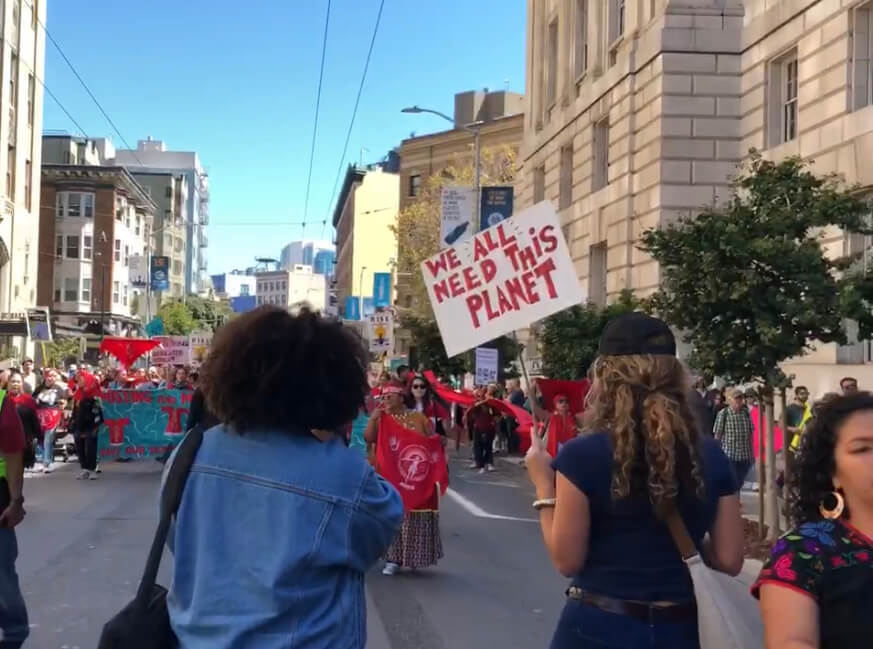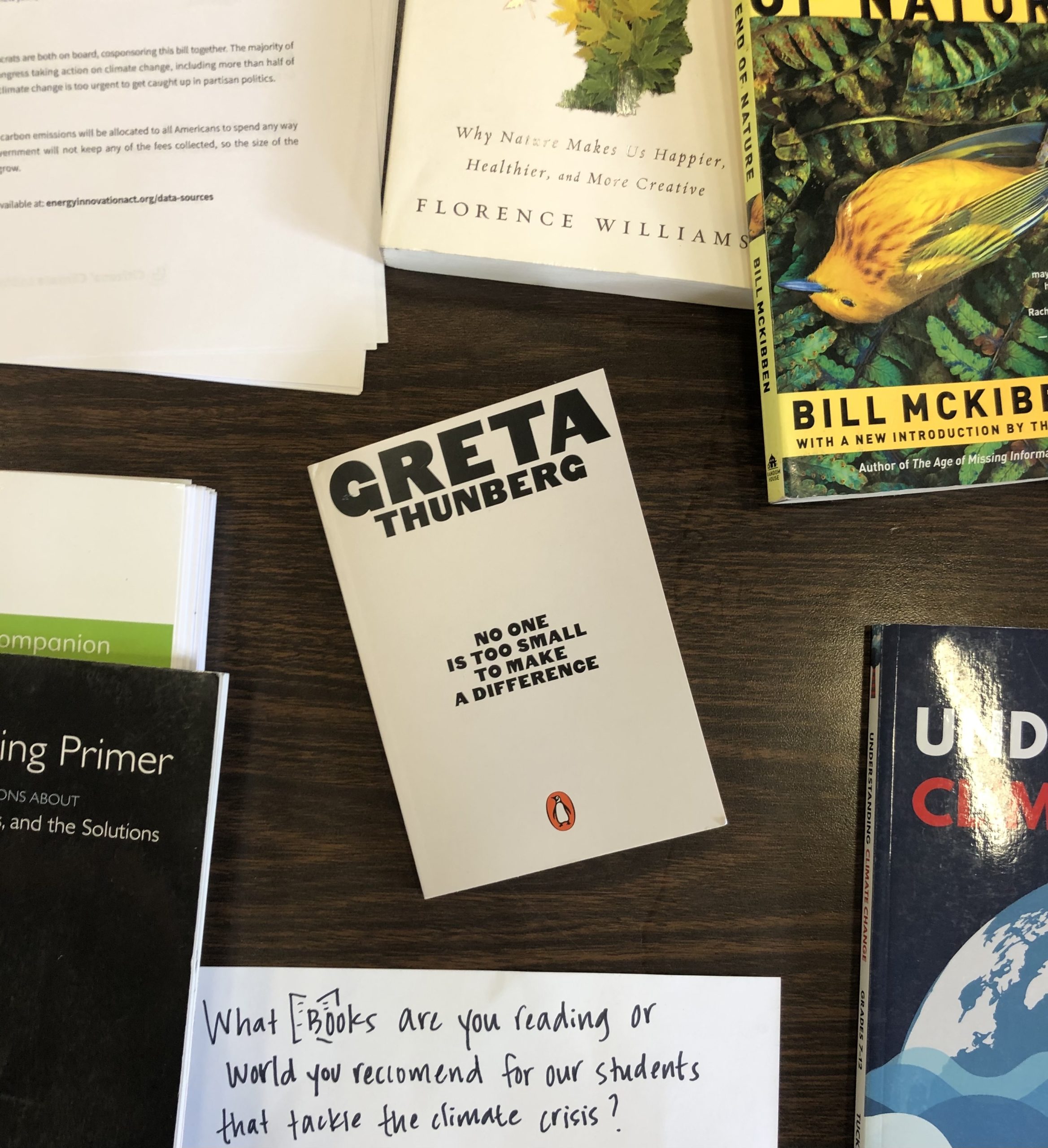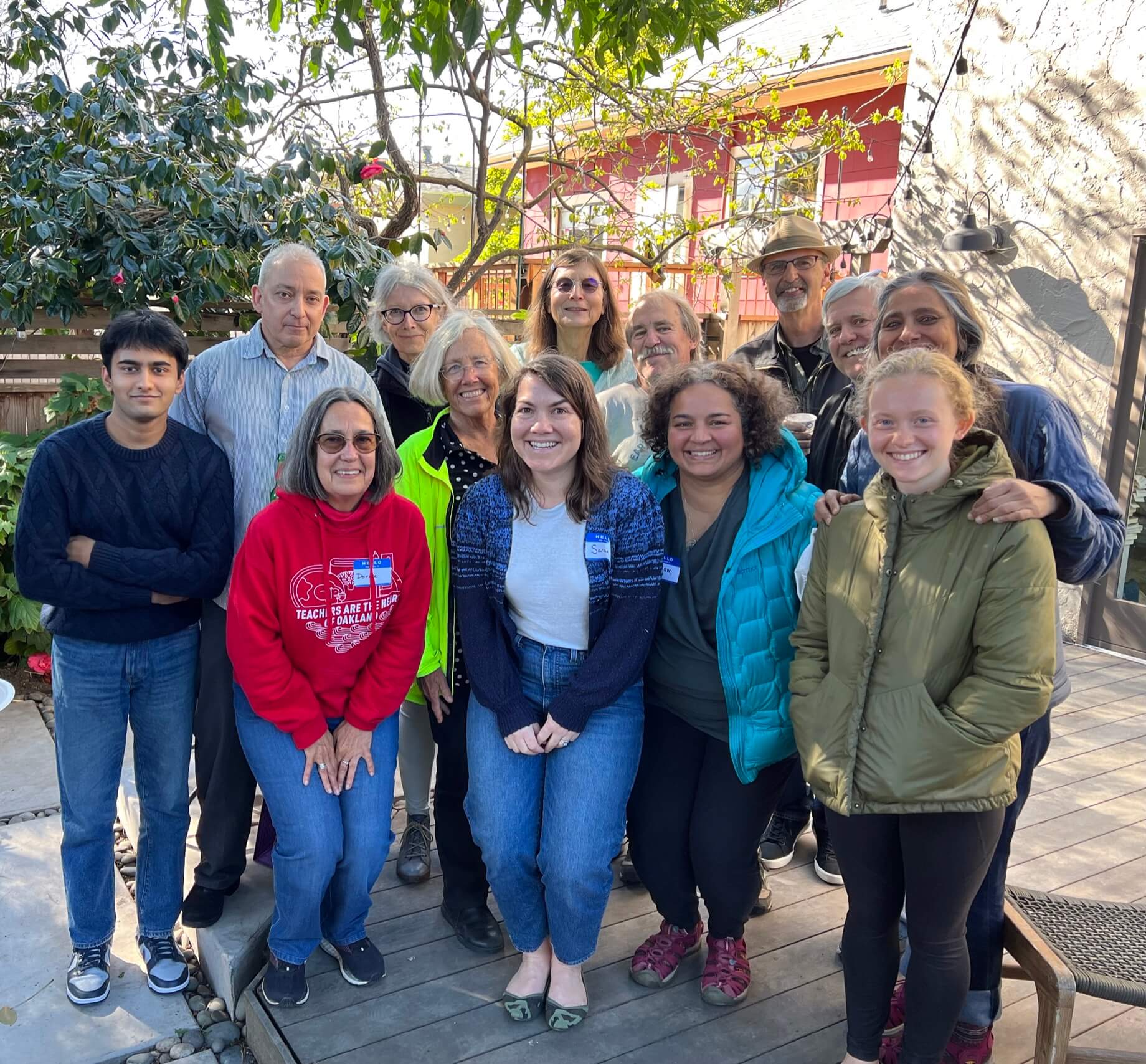The Sierra Club Climate Literacy Committee and Ten Strands have a shared commitment to empower all youth in California with the context and solution mindset to address our climate challenges head-on. This shared commitment has led us to work together last year, but how did it all start? Let me take you back to the beginning.

The first meeting of the Sierra Club Climate Literacy Committee was held on November 19, 2016. Created by Rebecca Franke and Kathy Dervin, the intent was to build a network of volunteers to help schools commit to teaching the fundamentals of climate literacy, defined by Sierra Club California as:
- the causes of climate change;
- its potential for harm;
- what is required to avoid climate destabilization;
- actions needed to ensure a livable future; and
- the key people and institutions involved in implementing those actions.
Held in the old Sierra Club offices on San Pablo Ave in Berkeley on a gloomy Saturday, the meeting brought together a group of teachers, activists, organizers, and a few people like me who were coming to terms with the results of the 2016 election and suddenly desperate to take action on climate change.
Rebecca and Kathy clearly established the committee’s focus and goal: to equip all high school students in California with an interdisciplinary understanding of our climate challenge as well as solutions to address it. At the end of the second meeting, they asked for people to step up and lead the ongoing efforts. I was seated next to a then-teacher named Helen Fitzmaurice who had already impressed the group with her insights and contributions. I nudged her with my elbow and whispered, “You should do it.” She laughed and replied, “Only if you do it with me.” Despite my doubts about my own qualifications, I agreed, and we both raised our hands. Suddenly, Helen and I were co-chairs of the Climate Literacy Committee, stepping into the impossible-to-fill shoes of Rebecca and Kathy.
The committee quickly settled on a school district focus, seeing an opportunity to empower local students, teachers, and communities on a scale that was small enough to navigate and large enough to effect real change in classrooms. Oakland Unified School District (OUSD) was our first opportunity to test this theory, with Joseph Senn introducing it as a project to his APES class at Oakland Technical High School. With the support of our committee, including two founding members, Deirdre Snyder and Janan Apaydin, and the Oakland Education Association (OEA)’s Environmental Justice Caucus, the APES students worked with OUSD administrators and board members to pass an Environmental and Climate Change Literacy resolution in 2019 – the first in California.


 Over the years, our committee has settled into a model of supporting students, teachers, and organizers in local communities to pass climate literacy resolutions and jump-start climate efforts in their school districts, including the student-led campaign that led to the passage of Fremont Unified School District’s Educational Response to the Climate Emergency in May 2021. In the Berkeley Unified School District, where my children are in elementary school, I worked with high school student Ella Suring and retired educator Martha Cain to lead the effort to pass the first Climate Literacy Resolution that included district funding, which passed in November 2021.
Over the years, our committee has settled into a model of supporting students, teachers, and organizers in local communities to pass climate literacy resolutions and jump-start climate efforts in their school districts, including the student-led campaign that led to the passage of Fremont Unified School District’s Educational Response to the Climate Emergency in May 2021. In the Berkeley Unified School District, where my children are in elementary school, I worked with high school student Ella Suring and retired educator Martha Cain to lead the effort to pass the first Climate Literacy Resolution that included district funding, which passed in November 2021.
Word of our model spread. Lucy Garcia, a retired teacher in Los Angeles, watched a webinar we gave in 2020 and connected with us. She brought some of our ideas and best practices to her work in LA. Through her leadership and the work of the LA Climate Reality Project, LAUSD passed a resolution in February 2022 and is working on providing teachers stipends to incorporate environmental and climate literacy in their classrooms. Their efforts are staggering in scale: 550,000 students and 25,000 teachers, bringing climate literacy with a focus on solutions to the second largest school district in the nation.
These successes have proved that our district approach works, but they’ve also revealed the limitations of a district-by-district approach. Passing a resolution turns out to be the easy part; implementing a climate literacy plan requires significant ongoing time and resources. Administrative support and stipends for teachers are critical components. Without a larger infrastructure for support and funding, too much responsibility (and unpaid labor) falls on the shoulders of teachers, retired educators, and volunteers to carry out the critical work of bringing climate curriculum into the classroom. OUSD has addressed this by successfully creating a working group in Oakland Teachers Advancing Climate Action (OTACA), receiving grants, and partnering with community groups and Ten Strands to develop curriculum; and BUSD, FUSD, and LAUSD are well on their way. But all our district working groups have expressed the need for more secure funding and more support for teacher efforts.

It became clear that the district model, while crucial for achieving equity and engaging students and educators within a community, needed to scale to meet the speed of the climate crisis. Over coffee in November 2021, Helen, Rebecca and I decided to use our district-level experience to advocate for state funding and support. Our committee members drafted a budget request letter and started sharing it with potential partners. Karen Cowe, Ten Strands CEO, saw an early draft and reached out with an offer to help. It was immediately apparent that we shared the same goals and complementary strategies: Ten Strands’ commitment to giving all students access to high-quality environment-based education fit well with the Climate Literacy Committee’s efforts to equip all high school students in California with an interdisciplinary understanding of our climate challenge.
Within days, our two organizations agreed to partner up and make our request public: $200M split across the California Department of Education, county offices of education, and individual school districts to execute a climate literacy implementation strategy focused on solutions and scaled to meet the climate emergency. Our budget request letter received support from more than 160 major education and environment groups, unions, and student organizations, and was championed in the State Senate by Senator Dave Cortese. Working together, the staff at Ten Strands and the volunteers within the Climate Literacy Committee, notably founding member Ernie Pacheco, met with more than a dozen legislators and state officials to advocate for our request. We held meetings so that legislators could hear directly from the student leaders who are advocating for solutions and change. Through those countless Zoom calls and emails during the hottest summer on record, I felt our collective resolve strengthen.

The California budget released in July included a record $54B in climate spending; unfortunately, none of that was for climate literacy. We waited a beat, and then got to work on a new request, incorporating what we learned to put forth a smaller budget to fund a scale-up of the California Environmental Literacy Initiative (CAELI) and the Environmental and Climate Change Literacy Projects (ECCLPs); support for county offices of education to advance environmental and climate literacy; and a grant fund for school districts to implement environmental and climate literacy.
This time, we’ve approached Governor Gavin Newsom’s office directly, asking him to include this in his January Budget Priorities. In the meantime, we continue our committee work, supporting amazing students, organizers, and activists across the state. The Climate Literacy Committee meets monthly to share updates, provide support to each other, welcome new members, and empower students and organizers to organize equitably within their communities. In our six years as a committee, we’ve met through good times and bad. We’ve cheered the rise of a global climate student movement, connected retired educators and teachers across districts, seen student champions step up to lead with courage and conviction, and taken heart in our collective efforts.

By working together, the Climate Literacy Committee and Ten Strands are closer than ever to realizing our goals: a student population equipped with an interdisciplinary understanding of our climate reality and the tools, support, and knowledge to face the defining challenges of our time.


One Response
This is a lovely article. I would love to see an update on the progress of Ten Strands’ Climate Justice Literacy project. I believe it is being tested by some teachers in my District, the LAUSD.